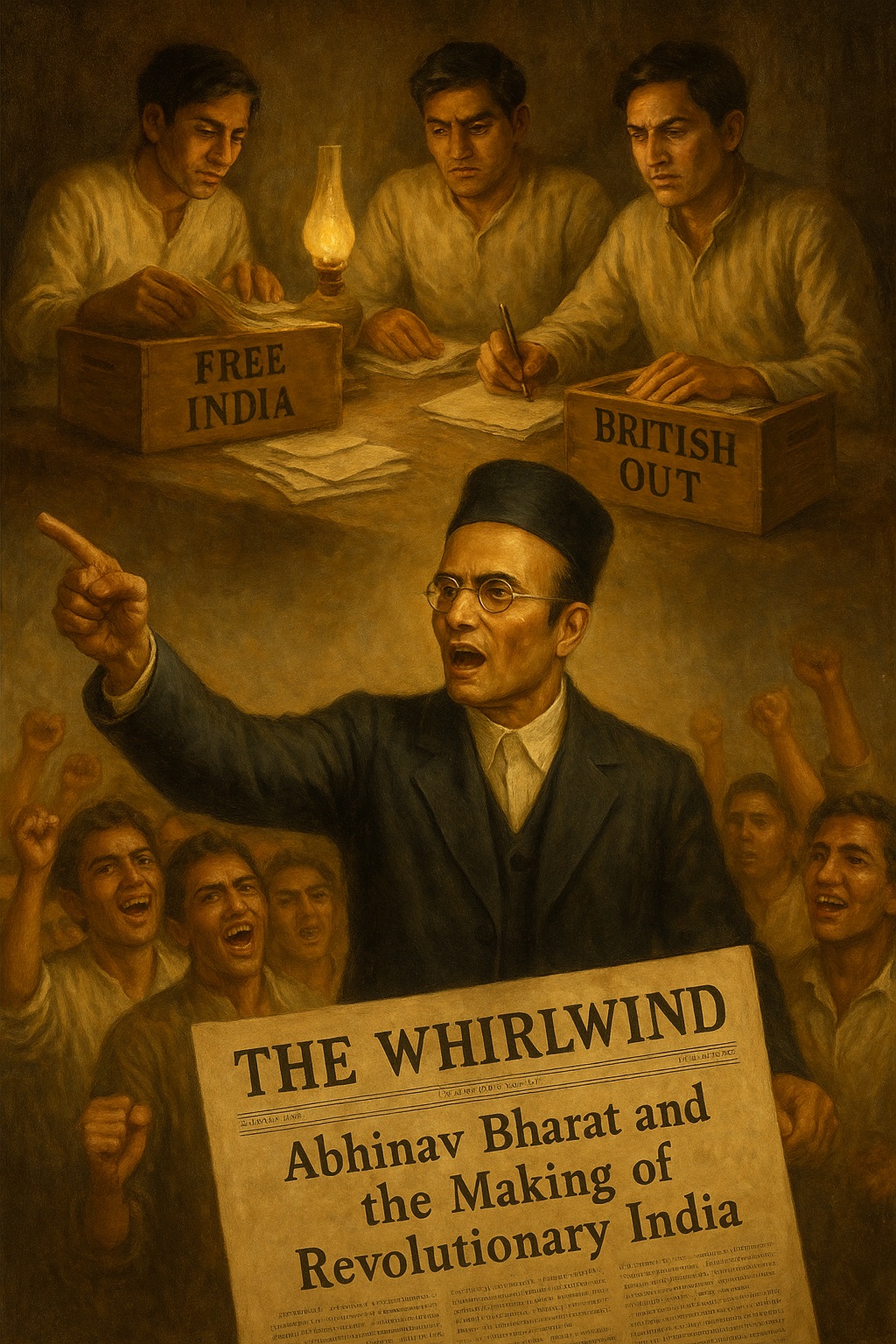In 1904, a young Vinayak Damodar Savarkar stood solemnly before a portrait of Chhatrapati Shivaji Maharaj, and proposed a bold and electrifying idea. He renamed his earlier organization, Mitra Mela, to Abhinav Bharat – meaning “New India” – a title that soon echoed as a threat in the corridors of British power, not just in India but across their empire.
More than a name, Abhinav Bharat was a call to action – a sacred vow, taken in front of Shivaji’s image, to liberate the motherland. The members swore oaths of unwavering loyalty to the cause of complete and absolute independence. Every meeting began and ended with the invocation: Swatantrya Lakshmi ki Jai – Victory to the Goddess of Freedom. This invocation revealed the movement’s spirit: a fusion of spiritual purpose with revolutionary zeal.
Savarkar envisioned Abhinav Bharat not as a mere militant cell, but as a vast, pan-Indian network with a structured philosophy and a clear roadmap. He was inspired by European nationalist movements, particularly Giuseppe Mazzini’s Young Italy, and adapted their model to India’s unique civilizational context. Wherever a member traveled, a new branch of Abhinav Bharat sprang up. From Maharashtra to Bengal, the society built secret alliances, held underground meetings, and disseminated their radical ideas.
The society’s aim was a holistic liberation – not just the end of colonial rule, but the creation of a society where intellectual, moral, and spiritual progress would accompany political independence. Savarkar articulated this vision through fiery speeches, clandestine publications, and strategic writings. In Bombay, he made the Marathi weekly Vihari a revolutionary mouthpiece, akin to Bengal’s Yugantar. In London, he launched Talwar, discussing not only revolutionary strategies but even forecasting the outbreak of a major European war – an astute calculation that reflected his geopolitical awareness.
Savarkar’s energy and charisma made him a celebrated figure across Maharashtra. With his square jaw, black cap, and piercing gaze, he became the face of militant nationalism. His work at India House in London transformed it into a hub of revolutionary activity. Although Abhinav Bharat did not publicly operate in the West, its ideas traveled silently through smuggled literature, secret correspondence, and whispered plans. Its members even began preparing explosives and distributing manuals for armed resistance.
In 1909, one of its members, Anant Laxman Kanhere, assassinated the British Collector of Nashik, A.M.T. Jackson, triggering a fierce British crackdown. Savarkar was arrested in the same year and sentenced to two life terms in the Cellular Jail in the Andamans. But Abhinav Bharat’s ideology lived on, influencing the Hindustan Socialist Republican Association and inspiring leaders like Bhagat Singh and Chandrashekhar Azad.
After decades of sacrifice, India finally achieved independence. In May 1952, acknowledging the fulfillment of its core mission, Savarkar formally disbanded Abhinav Bharat in Poona. Yet, its legacy remains – a symbol of determined resistance, fearless sacrifice, and the dream of a truly awakened nation.
What are your thoughts on Abhinav Bharat and its role in India’s struggle for Independence?
Share your insights in the comments below!
Sources:
GODBOLE, Vasudev Shankar. 2004. Rationalism of Veer Savarkar. Itihas Patrika Prashan: Thane/Mumbai.
KEER, Dhananjay. 1988. Veer Savarkar. Third Edition. (Second Edition: 1966). Popular Prakashan: Bombay (Mumbai).
SAMPATH, Vikram. 2019. Savarkar (Part 1). Echoes from a forgotten past. 1883-1924. Penguin Random House India: Gurgaon.
SAVARKAR, Vinayak Damodar. 1993. Inside the enemy camp. Veer Savarkar Prakashan: Mumbai. SRIVASTAVA, Harindra. 1983. Five stormy years: Savarkar in London (1906-1911) – A centenary salute to V.D. Savarkar. Allied: New Delhi.


Leave a Reply